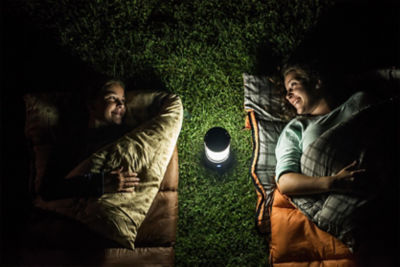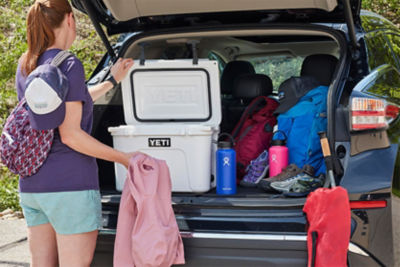Camp Essentials: How to Choose the Best Sleeping Pad for You
Having the right sleeping pad could make all the difference in warmth and comfort on your next outdoor overnight.

Sleeping pads don’t just provide cushion from the hard ground, but they are also essential to helping you stay warm while you sleep. Comfort, weight and packability will also come into play. If you are camping, hiking, hunting or attending a music festival, the right sleeping pad just might make the difference between being groggy and feeling well rested.

R-VALUE AND INSULATION
A sleeping pad’s ability to keep you warm is invaluable.
Even during warm summer months temperatures can drop at night. Having a layer between you and the ground can help to retain body heat for a comfortable night’s sleep.
When looking for a sleeping pad you may come across a number called R-Value, which ranges between 1-10 and corresponds to the insulation the pad provides. The higher the rating, the more heat the pad will retain. An R-Value between 1-5 will be sufficient for three-season camping. These pads will be lighter, packable and easier to carry. Anything above 5 will add weight, and may only be suitable for cold weather or car camping. Pads above 5 are designed for more extreme camping, such as sleeping outside where there is snow and ice on the ground.
INFLATION
There are a few inflation options for your sleeping pad. Choosing which inflation type is right for you depends entirely on what type of camping you will be doing. There are three basic types: self-inflating, inflatable, and foam or closed cell.

With an inflatable sleeping pad, you can opt for a lightweight pad that you manually blow up or use a small hand pump for. These are ideal for backpacking or camping. The downside to anything that inflates is that it can be punctured. Will it have a safe place in your pack? It’s something to think about, but also remember that patching your sleeping pad is relatively simple, as long as you remember to bring a patch kit with you. They are often included with the sleeping pad or can be bought separately. Overall, inflatable pads are the easiest to pack, typically fall in the middle when it comes to weight and comfort.
Self-inflating pads are typically the most convenient. You simply open the pad’s valve, which allows the foam cells to begin self-filling with air. Top it off with a few puffs of air to get to your desired firmness. They too can be punctured, but again this is a pretty easy fix. They are slightly heavier, so if packing weight is your biggest concern, you won’t find the lightest pads in this category. They are typically warmer than a lot of other pads. For an average hike or camping trip, the convenience and extra warmth may be worth the weight. Overall, self-inflatable sleeping pads are generally the most comfortable and warmest options, but are the heaviest.
The most durable option is a closed cell or foam pad. They require no inflation but you’ll be exchanging comfort for durability, as you don’t have much ability to change a closed cell pad’s firmness. They take up more space than the other two options but can be strapped to the outside of your pack without worry because punctures won’t hurt the performance of a foam pad. Overall, closed cell or foam pads are generally the least comfortable option and are the middle of the road in terms of warmth, but are typically the least expensive option and the lightest.
WEIGHT
Sleeping pads come in different widths, lengths and thicknesses. As we mentioned before, depending on your activity, packed size and weight may be a huge factor for you when choosing a sleeping pad.
Generally, self-inflatable pads are the heaviest, while inflatable pads are middle of the road and foam pads are the lightest. In terms of packed size, inflatable pads are the most packable, foam pads are the least packable and self-inflating ones rank in between. If you are big and tall, consider looking for an XL pad.
HAMMOCKS
Are you a hammock camper looking for extra comfort while you snooze? Try using a sleeping pad. It’s actually colder to sleep in a hammock than it would be to sleep on the ground, so a sleeping pad is even more valuable. It might seem like quite a squeeze to get a sleeping pad into a hammock, but here’s a tip: buy a double hammock and put a single sleeping pad inside. This could give you the cozier night’s sleep you’ve been dreaming of.
Forget about sleeping on the cold and uncomfortable ground. Whether you’re hiking or car camping, get yourself the right sleeping pad. You’ll rest better and get more enjoyment out of the great outdoors.








